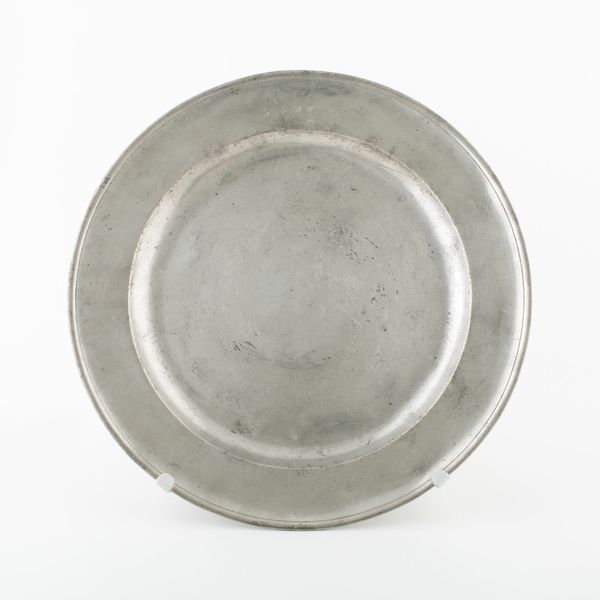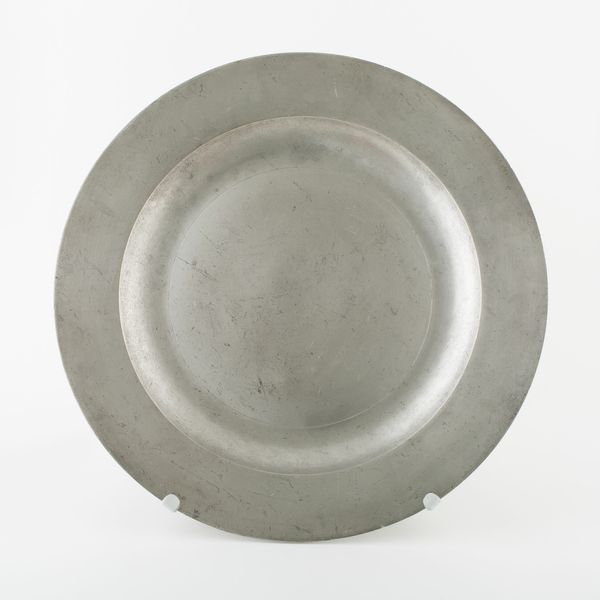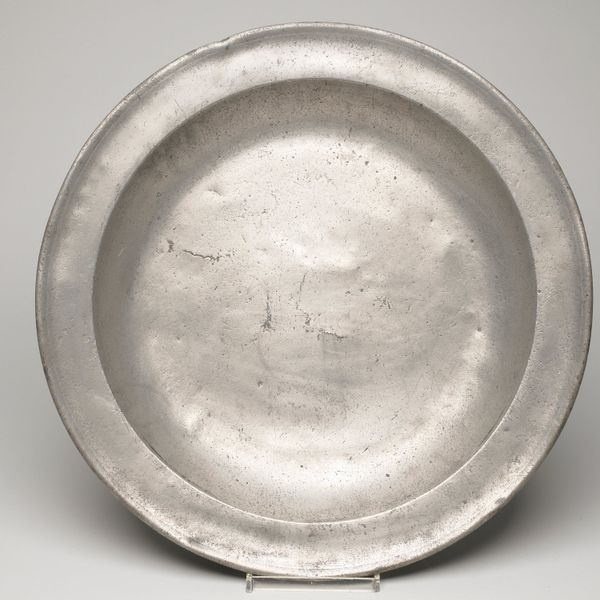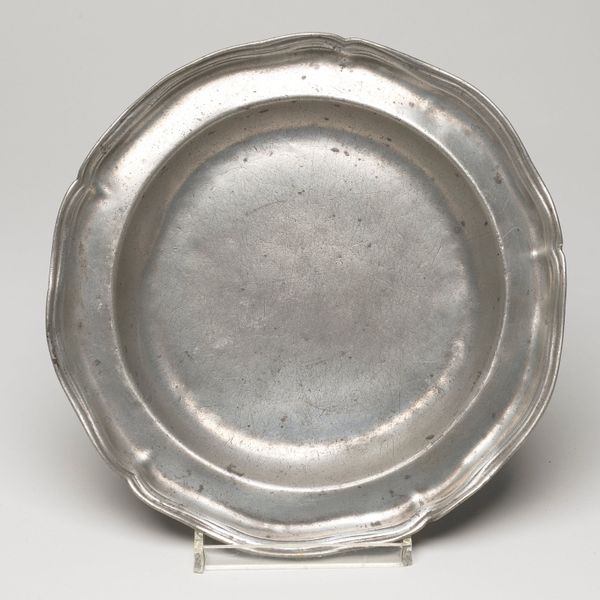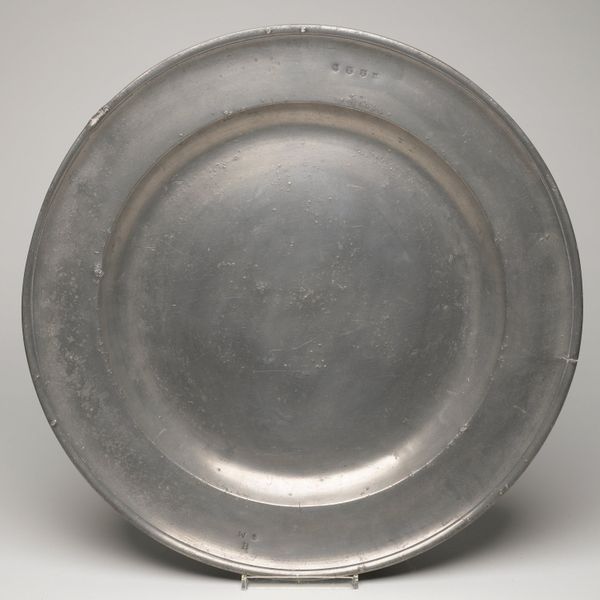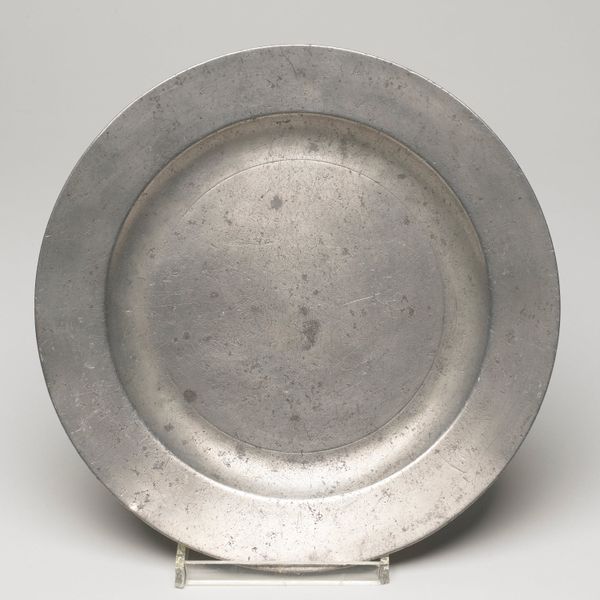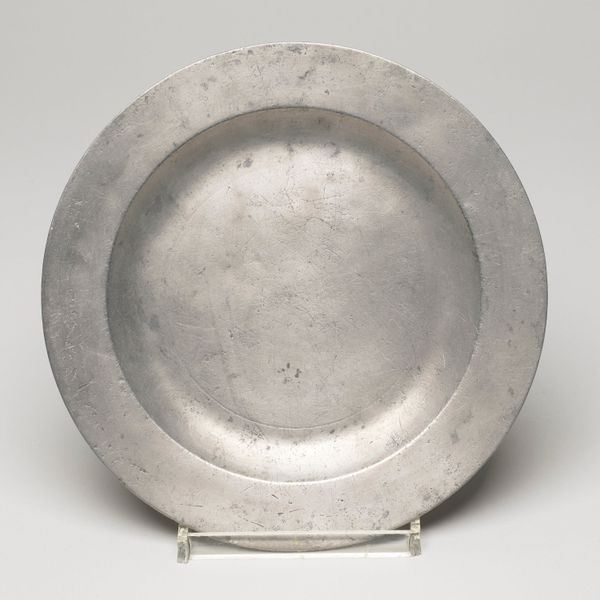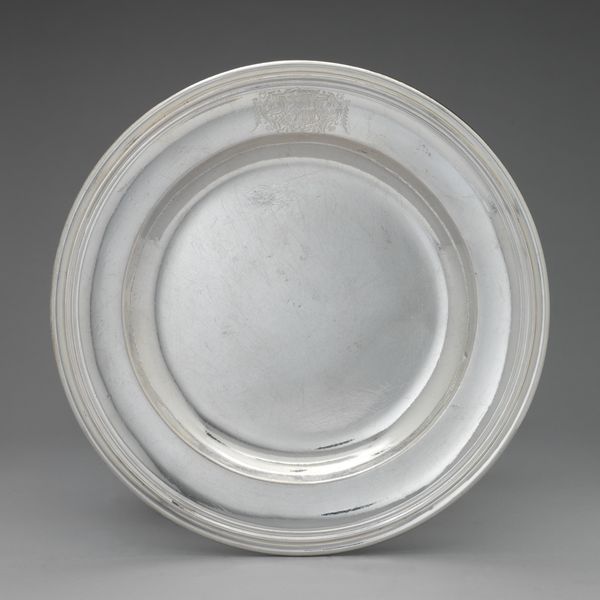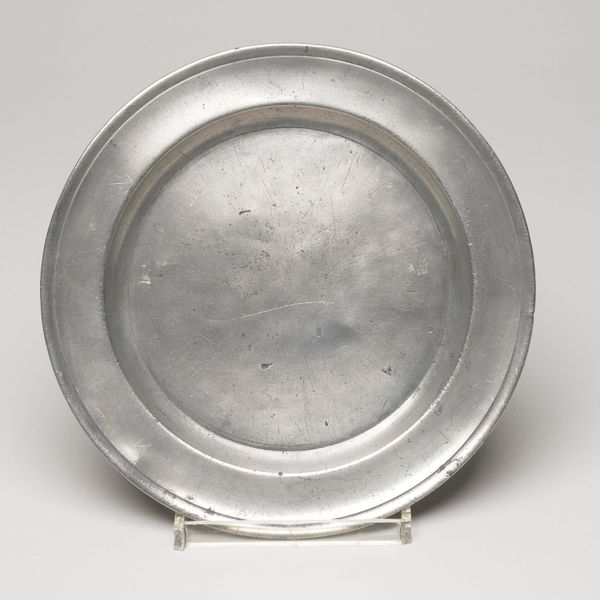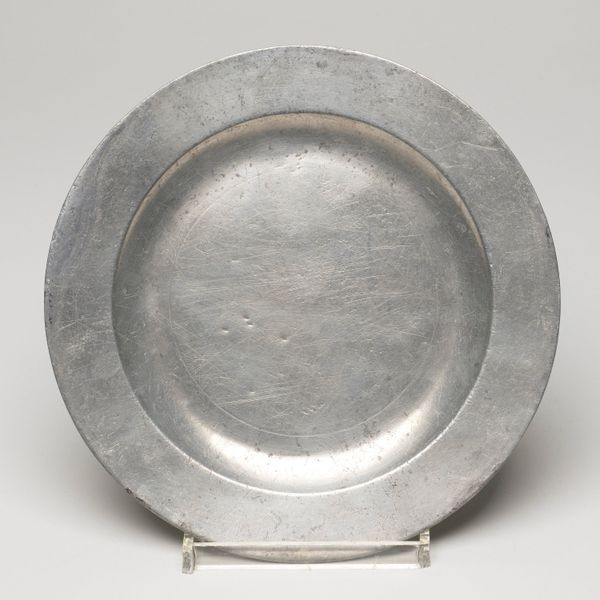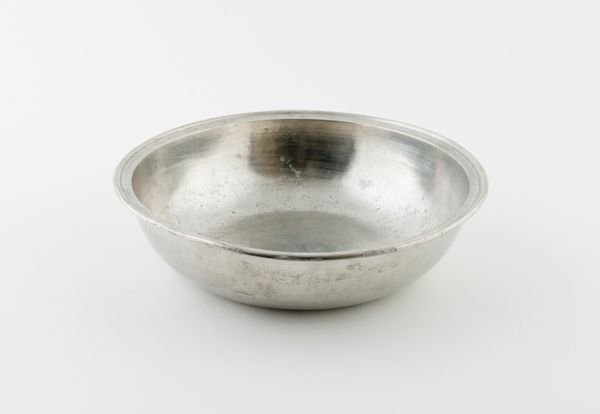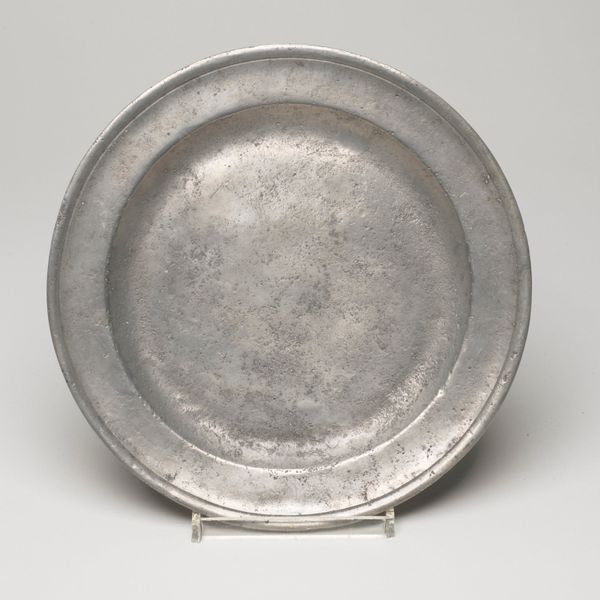
ceramic, earthenware
#
baroque
#
ceramic
#
earthenware
#
stoneware
#
ceramic
#
decorative-art
Dimensions: 6 × 40.2 cm (2 3/8 × 15.16 in.)
Copyright: Public Domain
Editor: Here we have a "Charger" by Sebald Ruprecht, dating from 1700 to 1750. It's made of earthenware, a type of ceramic. It looks so simple, almost austere. What can you tell me about it? Curator: For me, this charger speaks volumes about the shift in materiality and production during that era. Earthenware, as a relatively inexpensive material, reflects broader consumption patterns. Consider how the availability of such tableware shaped dining practices. What does its presence in a collection like The Art Institute of Chicago suggest to you about our understanding of “art” versus utilitarian object? Editor: That's interesting. I guess I hadn't thought about where something like a plate fits into the art world. Does the shift to earthenware say something about the status of ceramic work at the time? Curator: Absolutely. Think about the labor involved. Earthenware production, though widespread, often meant reliance on local clay sources and perhaps less-specialized craftsmanship compared to porcelain. So, its value lay not necessarily in rarity but in its accessibility. Is there any element or marking in the piece that shows how the process reflects in its form? Editor: Well, I can see an emblem, initials maybe. But it seems quite modest. Perhaps more a stamp of production, than a display of artistry. Curator: Precisely. And what does that suggest to you about the maker’s intentions, the purchaser’s expectations, the broader societal attitudes toward function, artistry, and status? Editor: I see what you mean. I assumed it was just a plate, but now I’m considering how its materials, its method of creation, and even its presence in the museum says a lot about culture and class. Thanks! Curator: Indeed. It's a reminder that everyday objects can be powerful testaments to the social and economic forces that shape them, and us.
Comments
No comments
Be the first to comment and join the conversation on the ultimate creative platform.
